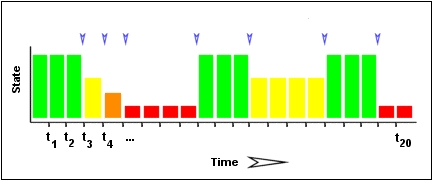Are you looking for detailed information about Nagios flapping? We’ll help you to have a clear idea about it.
Usually, flapping occurs when a host/service changes its state frequently.
At Bobcares, we often receive requests to fix flapping errors as part of our Server Management Services.
Today, let’s have a detailed look at how Nagios detects flapping easily.
More about flapping
Before getting much detailed into the topic, let’s have a look at flapping.
As we all know, Nagios is one of the popular open-source monitoring tools.
And, server monitoring with Nagios has many advantages. It helps in the fast detection of server failures, network outages and so on.
Flapping is a situation where the host or service changes its state rapidly. It can lead to many problems and recovery notifications.
How Nagios detects flapping?
Usually, flapping indicates configuration problems, network problems and so on.
And, Nagios has the ability to detect whether hosts and services are flapping or not.
The state of the hosts and services is an important factor for monitoring the flapping. There are two states for a host or service, soft state, and hard state.
And, when a host changes its state, it executes some optional commands called event handlers. And, these event handlers help the Nagios to detect flapping.
Steps used by Nagios to check flapping
Now, to check whether a service has been started or stopped flipping, Nagios follows the below steps.
- Firstly, it stores the results of the last 21 checks of the host or service.
- Then, it analyses these check results and determines whether some transitions have occurred or not.
- After that, Nagios measure the percent state change for each service based on the transitions.
- The flap detection algorithm calculates the percent state change. And, it gives more preference to newer state changes.
- Then, it compares the percent state change value against the low and high flapping threshold.
The below figure shows the chronological history of service states from different service checks.

Finally, on comparing, if the calculated result is equal to or greater than the high flap threshold, then Nagios conclude the service started flapping.
Similarly, if the result is less than the low flap threshold, it indicates that the service stopped flapping.
[Need more information related to Nagios flapping?- We’re available 24/7 to help you.]
Conclusion
In short, flapping is a situation where the host or service changes its state rapidly. And, in today’s article, we have discussed how Nagios detects flapping in detail.




0 Comments